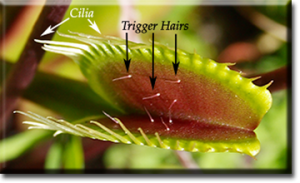The nano safety center at Harvard University (Massachusetts, US) is a joint center with the US National Institute of Environmental Health Sciences according to an Aug. 29, 2016 news item on Nanowerk,
Engineered nanomaterials (ENMs)—which are less than 100 nanometers (one millionth of a millimeter) in diameter—can make the colors in digital printer inks pop and help sunscreens better protect against radiation, among many other applications in industry and science. They may even help prevent infectious diseases. But as the technology becomes more widespread, questions remain about the potential risks that ENMs may pose to health and the environment.
Researchers at the new Harvard-NIEHS [US National Institute of Environmental Health Sciences] Nanosafety Research Center at Harvard T.H. Chan School of Public Health are working to understand the unique properties of ENMs—both beneficial and harmful—and to ultimately establish safety standards for the field.
An Aug. 16, 2016 Harvard University press release, which originated the news item, provides more detail (Note: Links have been removed),
“We want to help nanotechnology develop as a scientific and economic force while maintaining safeguards for public health,” said Center Director Philip Demokritou, associate professor of aerosol physics at Harvard Chan School. “If you understand the rules of nanobiology, you can design safer nanomaterials.”
ENMs can enter the body through inhalation, ingestion, and skin contact, and toxicological studies have shown that some can penetrate cells and tissues and potentially cause biochemical damage. Because the field of nanoparticle science is relatively new, no standards currently exist for assessing the health risks of exposure to ENMs—or even for how studies of nano-biological interactions should be conducted.
Much of the work of the new Center will focus on building a fundamental understanding of why some ENMs are potentially more harmful than others. The team will also establish a “reference library” of ENMs, each with slightly varied properties, which will be utilized in nanotoxicology research across the country to assess safety. This will allow researchers to pinpoint exactly what aspect of an ENM’s properties may impact health. The researchers will also work to develop standardized methods for nanotoxicology studies evaluating the safety of nanomaterials.
The Center was established with a $4 million dollar grant from the National Institute of Environmental Health Science (NIEHS) last month, and is the only nanosafety research center to receive NIEHS funding for the next five years. It will also play a coordinating role with existing and future NIEHS nanotoxicology research projects nantionwide. Scientists from the Harvard John A. Paulson School of Engineering and Applied Sciences (SEAS), MIT, University of Maine, and University of Florida will collaborate on the new effort.
The Center builds on the existing Center for Nanotechnology and Nanotoxicology at Harvard Chan School, established by Demokritou and Joseph Brain, Cecil K. and Philip Drinker Professor of Environmental Physiology, in the School’s Department of Environmental Health in 2010.
A July 5, 2016 Harvard University press release announcing the $4M grant provides more information about which ENMs are to be studied,
The main focus of the new HSPH-NIEHS Center is to bring together scientists from across disciplines- material science, chemistry, exposure assessment, risk assessment, nanotoxicology and nanobiology- to assess the potential environmental Health and safety (EHS) implications of engineered nanomaterials (ENMs).
The $4 million dollar HSPH based Center which is the only Nanosafety Research Center to be funded by NIEHS this funding cycle, … The new HSPH-NIEHS Nanosafety Center builds upon the nano-related infrastructure in [the] collaborating Universities, developed over the past 10 years, which includes an inter-disciplinary research group of faculty, research staff and students, as well as state-of-the-art platforms for high throughput synthesis of ENMs, including metal and metal oxides, cutting edge 2D/3D ENMs such as CNTs [carbon nanotubes] and graphene, nanocellulose, and advanced nanocomposites, [emphasis mine] coupled with innovative tools to assess the fate and transport of ENMs in biological systems, statistical and exposure assessment tools, and novel in vitro and in vivo platforms for nanotoxicology research.
“Our mission is to integrate material/exposure/chemical sciences and nanotoxicology-nanobiology to facilitate assessment of potential risks from emerging nanomaterials. In doing so, we are bringing together the material synthesis/applications and nanotoxicology communities and other stakeholders including industry, policy makers and the general public to maximize innovation and growth and minimize environmental and public health risks from nanotechnology”, quoted by Dr Philip Demokritou, …
This effort certainly falls in line with the current emphasis on interdisciplinary research and creating standards and protocols for researching the toxicology of engineered nanomaterials.
